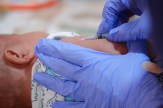Removing barriers to addiction treatment can save lives, White House drug czar tells Northeastern audience
Harm and supply reduction are some of the ways to cut back on overdose deaths, Rahul Gupta, director of the Office of National Drug Policy Control, said during a fireside chat at Northeastern’s Charlotte campus.
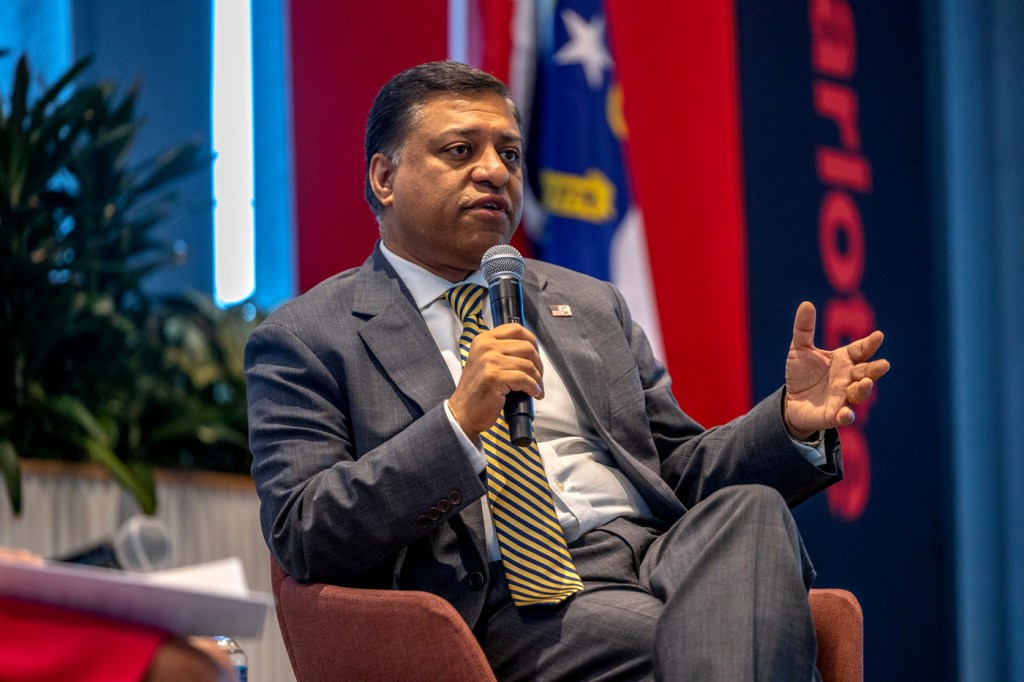
When Dr. Rahul Gupta was working in rural Alabama, he had a patient who had become addicted to pain medication. Gupta didn’t have the special license to prescribe him treatment for his addiction, so he gave him a referral to a provider 80 miles away.
Several weeks later, Gupta was working in the emergency room when the same patient came in and died of an overdose. The patient never sought the treatment Gupta referred him to because he said didn’t have the time or resources to get to the provider.
Gupta, now the director of the Office of National Drug Control Policy, said his inability to prescribe treatment for addiction was an artificial barrier. Removing those barriers is one of the keys to helping millions of Americans with an opioid addiction, he explained during a recent fireside chat on Northeastern University’s Charlotte campus.
The chat was moderated by Gibbie Harris, a visiting assistant clinical professor at Northeastern and former health director for Mecklenburg County, North Carolina.
“It’s important that we work to remove these artificial barriers like the extra license,” Gupta said. “We’ve gone from 129,000 that used to have the special license to almost 2 million. Every county here in North Carolina now has a provider that can prescribe treatment for addiction and that’s important.”

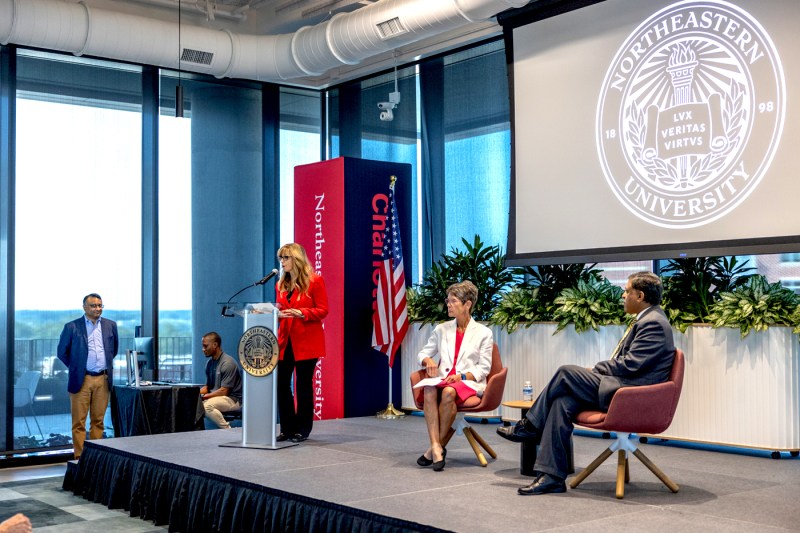
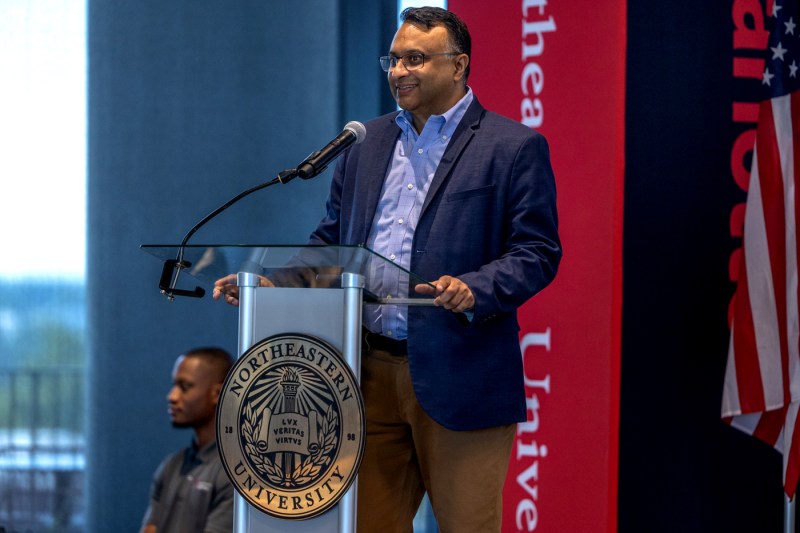
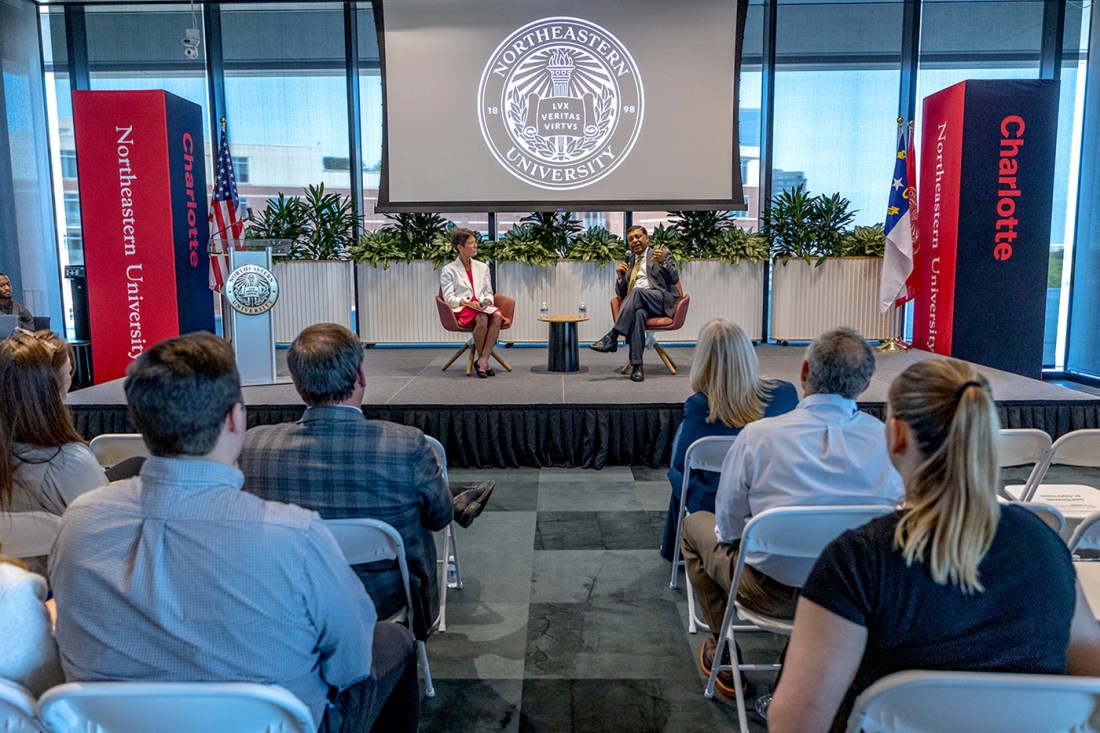
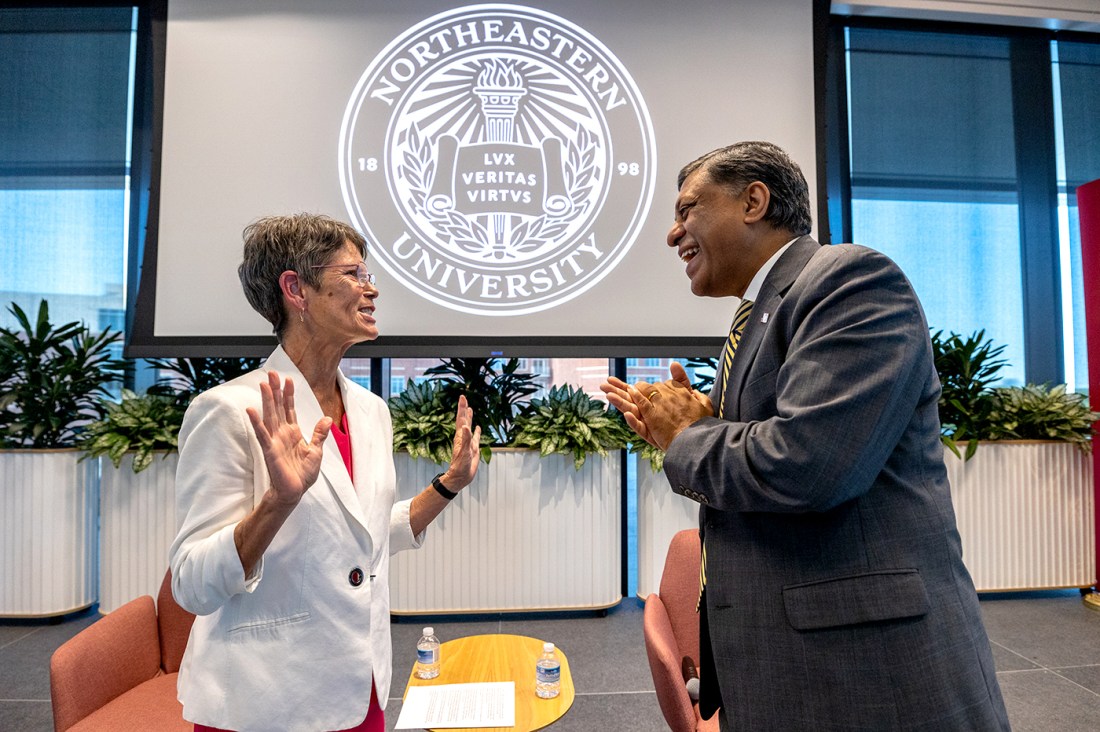
It’s also important that providers are screening patients for addiction and then treating or referring them appropriately, Gupta said.
“It takes time but to remove the stigma and make it easier to get treatment than to get illicit drugs is a core element of what we’re trying to do,” he said.
Drug overdoses are a leading cause of death in the United States, and opioids account for most of these instances, according to the Centers for Disease Control and Prevention. This is costing the United States trillions of dollars and millions of lives, Gupta said.
Featured Posts
But Gupta said that the number of fatal overdoses declined nationwide in 2023 for the first time since 2018.
“I don’t know when was the last time we had a reduction,” Gupta added. “But I will tell you this is the time to double down on things that are working. I really believe deeply that we can end this (epidemic.) The way we do it is we take a compassionate yet evidence-based approach that includes one of prevention, harm reduction, treatment recovery, while also on the flip side, taking smart approaches to supply reduction.”
For Gupta, this includes not just increasing the number of providers licensed to prescribe addiction treatment, but increasing funding for harm reduction programs and opportunities for treatment. This especially applies to people leaving prison, who Gupta said have a higher odds of having a substance use disorder and overdosing upon release. Providing funding for people being released from prison to get into treatment and a job after being incarcerated can help save lives, he added.
On the supply reduction side, Gupta said much of the fentanyl entering the country is coming through legal ports of entries. Using drug detection scanners could help reduce this, he said.
Gupta also spoke about the importance of increasing the availability of treatment in rural areas. Something like telehealth appointments or a mobile clinic could’ve helped the patient he had who died of an overdose.
“That’s been a silver lining of the pandemic, that we have telehealth opportunities now that are permanent,” Gupta added. “We have that opportunity to expand treatment further. I also think we should focus on primary prevention, especially in schools. If that is not available, we should think about how to invest money into one of the best returns on investment that often doesn’t get talked about, which is primary prevention. You have to invest in the next generation as well.”
Another significant part of this effort is also increasing the availability of Naloxone, an overdose reversal drug, across the country. Naloxone is available over the counter for as little as $24 a pack, Gupta said, and carrying it can and has saved lives.
The company behind the drug is increasing production, he added, so it can be even more available. Airlines have started carrying it as have Los Angeles schools, a development that Gupta said has led to 50 lives being saved.
“I’d like to see Naloxone available just like a defibrillator device or a fire extinguisher, whether it’s in private offices, malls, schools, family restaurants or other private facilities,” Gupta said. “That is the way we’re going to be able to save people from dying. While we do need to get people treatment, you can’t treat dead people. We have to keep people alive as triage in order to get them the help they need.”






